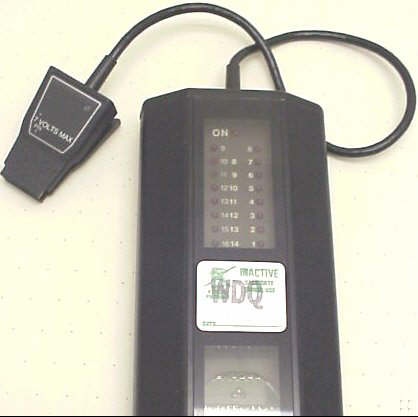| Mark Smart Home /\ | ||
|
Check out my YouTube channel. |
I have been doing electronic testing and repair for many years. The logic comparator is a device I built for in-line testing of digital IC's.
One day while cleaning an old storage room at work, I found a mysterious contraption called the Hewlett-Packard Logic Comparator. It appeared to have been made around 1970:

The idea behind it is very simple but effective. While still operating in its circuit board, the chip you wish to test is compared to a known-good reference chip. You attach a test clip to the IC under test, and slip a little board into the logic comparator that contains a known-good IC of the same type. The logic comparator connects all the reference IC's input pins to the input pins of the IC under test. Then it compares the outputs on the reference chip to those of the IC under test. If the outputs are different, an LED lights up on the panel, telling you there is a problem on that pin and saving you a ton of time poking around with the oscilloscope. For each LED, the logic comparator has a circuit to make the LED visible even if there are only very short discrepancies between the outputs.
I thought that was a great idea, but it wasn't very useful to me at the
time because it only worked on very basic 14- or 16-pin TTL IC's. I was
able to figure out the simple circuits inside the HP device despite
their efforts to prevent reverse engineering by putting mysterious
part numbers on basic TTL ICs. I took their idea and expanded it to
work on various larger TTL chips as well as 1488 and 1489 TTL/RS-232 c
onverters. For chips with bidirectional data pins or tri-state outputs,
I added buffer circuitry to make things work properly.
Like the HP version, my logic comparator had a different plug-in
board for each chip type I needed to test. Since I wanted to be able to
test many different-sized ICs, I mounted a connector on each board to
which the appropriate clip cable could be attached. I built clip cables
for chips with 14, 16, 20, 24, and 40 pins, as well as one for surface
mount LT1137 driver chips. The finished unit has saved me many hours of
debugging time.